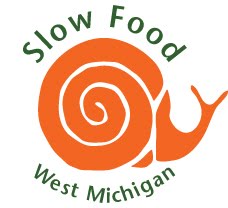Tasting and Touring Michigan’s Homegrown Food is a new book that celebrates local food through a culinary tour of Michigan featuring photos, stories, and recipes. Below is an interview with the author, Jaye Beeler.
What gave you the idea to publish this book?
I’m gaga over the beautiful fruits and vegetables that we grow in our state. We owe a huge gratitude to the men and women who grow the gorgeous food that we eat – there’s an incredible generosity, spirit on the many, many small family farms. Michigan is an amazing place to eat. Michigan is the second most agriculturally diverse state in the nation, behind California – which is amazing, considering their growing season is so long and ours so short. In so many crops, we’re leading the pack – tart cherries, apples, peaches, dried beans, asparagus, blueberries. That’s not counting our hand-crafted beer, wines, artisan breads, micro-creameries, and Zingerman’s Deli in Ann Arbor, just an extraordinary taste-maker in so many areas.
Do you have any humorous travel stories that you will remember forever?
Dianne and I are friends and neighbors who tooled about the state, eating in season, and just hanging out with the producers. So it felt like fun throughout - we joke about Dianne’s skittishness when we climbed into the cow pasture, the turkeys gobbling up a storm, the fishery clerk who couldn’t take my unbridled enthusiasm at all of the wild-caught lake fish — at Big Stone Bay Fishery in Mackinaw City, and the sheer amazing magnitude of Zingerman’s. We had a schedule, based on what’s growing when and where, so that shaped our journey. This taste/tour book was all about the journey and the Michigan hospitality we encountered.
What is your favorite Michigan food, and why?
I really try to eat in seasons, so when strawberries are ripe, we’re devouring them in everything, making jam, shortcake, tarts and you name it. When apples come on board, we’re onto loving apples and trying as many varieties - Molly Delicious, Zestar, Ginger Gold — as we can find. So every season, we’re smitten with a different fruit and vegetable.
Plus, I love growing what I can. I started out with leafy herbs and the French wood strawberries called Fraises des bols – they are adorable. Now my husband, Rich, and I grow about a dozen heirloom tomatoes, assorted peppers, broccoli, collard greens, butternut squash, pumpkins, muskmelons and green beans and we planted two peach trees and a raspberry bush. I try to preserve what I can, every summer I put up strawberry jam, basil pesto, oven-roasted tomatoes and freeze blueberries and raspberries that we pick ourselves. Last year, we got about as many mosquito bites as we did blueberries. My all-time favorite thing to freeze is local cranberries. Around late September or early October, I buy a big box of Pilgrim cranberries from DeGrandchamps Farm in South Haven, where they grown about six varieties of cranberries. Michigan has a long history with cranberries with native bogs dating back centuries.
Did you have any surprises as you worked on this book?
Just how delicious Michigan is. Our taste and tour book shares the best of Michigan. We pack it with all sorts of delicious stories and photographs for you to devour with your eyes. For more than a year, photographer Dianne Carroll Burdick and I traipsed about the state, visiting people who are hand-crafting homegrown food. We covered every aspect from farm fields, orchards, and lakes to farm-to-fork restaurants, bakeries, and farmer markets — the key was everything had to be homegrown. Keep in mind, Michigan is ginormous so we only went to a fraction of the places, wonderful places, but this book is all about encouraging people to get out there and make their own discoveries. The back-stories that we discovered were powerful and just sweet. The dedication that these producers exhibit to hand-craft these beautiful things for us was just beyond amazing.
At the end of each chapter, we list the places we visited to help get people started. We really want people to start wherever they are, because good stuff is about 15 minutes from you. Start at the farmers market with your favorites.
We end the book with nearly 30 recipes — from pearsauce, similar to applesauce, to cider-roasted lamb — which increases the chances that good food will land on your table.
Sometimes eating locally can be overwhelming to people used to eating out or cooking from boxes and cans. What advice do you have for someone who is interested but doesn’t know where to start?
Go to a farmers market and find somethig wonderful. Buy lots of food you can eat raw or simply cooked — almost picnic fare such as fresh berries, salad mix, teeny tomatoes, farm eggs, farmstead cheese, wild-caught Lake Michigan fish and pastured meats for the grill. When your food is harvested when it’s truly ripe not economically ripe for a supermarket’s timetable, then you really don’t need to do much but eat and enjoy. So start at a farmers markets, roadside farm stands, you-pick farms. Join a Community Supported Agriculture farms where you give the farmer money upfront for a part of the harvest. It forces you to start with the whole food because that’s what you’re given in your box.
So your first stop is a farmers market which feeds the community, grounds us in the place we call home. It’s the one place that people from all walks of life gather. When my husband, Rich, and I travel around the U.S. or abroad, we search out the farmers markets. We love discovering the local foods, regional specialties. I can remember the first time I tasted a custard apple in Australia, a white-fleshed peach in Paris, and the exotically different vegetables to be found in London’s Brick Lane. All of that, opened my eyes and palate to the possibilities. We’re lucky enough to live in Michigan, a state with 271 farmers markets. I go to the Fulton Street Farmers Market in Grand Rapids, all winter long. They keep winter hours from 10 a.m. to 1 p.m. Saturday. I can tell you the names of each farmer I purchase from, where they live, and what else they carry because I have a personal relationship with each one. I’m purchasing food with a name, a face and origin. Another good bet, is the West Michigan Cooperative, an online farmers market, providing locally raised foods year-round. They host a pick-up day where all the farmers and members come together at the once-a-month marketplace. It’s open to every one, you can shop for two months trying it out, before joining.
If you’d like to meet Jaye and Dianne, they will be appearing throughout the summer at places like Schuler’s and the Grand Rapids Public Library. Visit their website for their most current calendar.




Let's Connect!